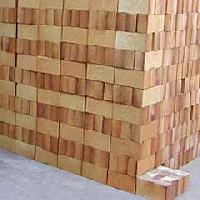Bricks (Refractory)
| Infobox on Bricks (Refractory) | |
|---|---|
| Example of Bricks (Refractory) |  |
| Facts | |
| Origin | - |
| Stowage factor (in m3/t) | - |
| Humidity / moisture | - |
| Ventilation | - |
| Risk factors | - |
Bricks (Refractory)
Contents
Description
These bricks are of varying constituent chemicals, consistency, etc., according to intended usage, e.g. blast furnace linings, kilns, industrial boilers, power plants, etc., many purposes involving very high and sustained temperatures. Susceptible to mechanical damage. Absorption of sal water can render the bricks hazardous when heat is applied.
Chrome magnesite bricks are porous and will absorb moisture; this will cause a breakdown of the fabric, causing crumbling.
Susceptibility to damage of this nature is well known to users of this class of brick, and steps are usually taken to protect the bricks from the elements while on open quays, etc. Chrome magnesite bricks vary considerably in colour, due to the nature and type of chrome used in the manufacture. Colour will vary from a light yellow to a dark brown, and contact with fresh water should not materially affect the original colour of the bricks.
Damaged bricks, if of no value for their original purpose, have a salvage value as ‘Hot Repair Cement’.
Full information on this product is in the process of completion.











